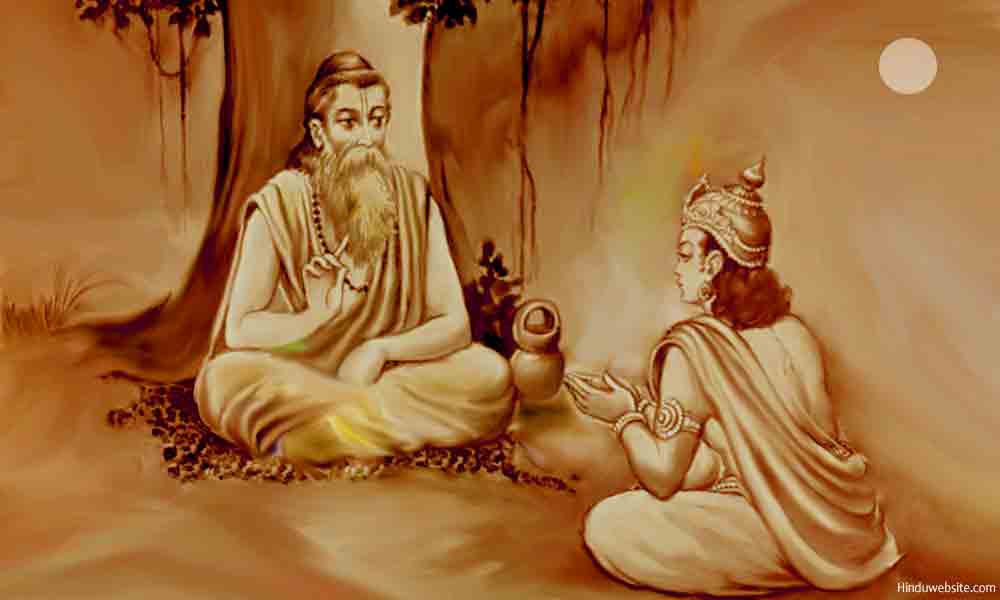
Ashtavakra Samhita, Chapter 2, Verse 9

Contents
Verse 9
aho vikalpitam vishvam ajnaanaanmayi
bhaasate
ruupyam shuktau phanee rajjau vaari suuryakare
yathaa
Translation
Oh, the universe shines in me as an alternative due to ignorance just as silver in the mother of pearl, snake in the rope, and water in the sunlight.
Meaning
The illusion within and without
There is a world in you which is a reflection of the world outside. You are its creator and sustainer. You give it life, make it shine and nourish it with your thoughts and desires. The world in you is vast and complex. It is modeled on the outside world, but it is colored by your thoughts, desires, projections, and attachments. Without you, it cannot exist because it is totally dependent upon you and vanishes when you withdraw from it.
The inner world disturbs you as much as the outer world, and can be a source of your karma and bondage to the extent you become involved with it and perform your action according to it. The dream world is part of your inner universe. Apart from it, there are many other subtle worlds, spheres of the sense deities and of various other organs. They are bound to your mind wherein most of your inner worlds reside. You are thus a replica of the Supreme Being, the Purusha, the Creator of innumerable worlds, both gross and subtle.
Both your external and internal worlds are unreal. They exist because of your duality and your identification with your physical nature. They are vikalpa, meaning reflected or alternate realities that arise from the creation of Self. Therefore, they are also untrue. The illusory nature of creation is the predominant theme of Advaita philosophy. The world shines as a super imposition upon the Self because of duality, which is caused by your ignorance and involvement with sense objects. You see the reflection of your thoughts as a world and mistake it for real. This is maya, the delusion.
Three examples are given here to describe the nature of Maya, the shining layer of silver in the mother of pearl, the snake that appears in a rope, and the mirage in the intense heat of sunlight. All the three allude to creation as a superimposition, or a false construct created by the mind or the senses. Now, how can the three examples which are mentioned here as illusions can be used to describe the illusory nature of the world in which we live and the world that lives in us? There are all reflections or formations, just as the world that arises in you and that appears outside you. You should be more concerned with the world inside, because you cannot easily escape from it, ignore it or avoid it, even after renunciation.
In case of the world, we see the physical manifestations that are visible to us, but do not see the Self that is hidden in them. The same is true with the world inside. You see images and feel emotions and sensations, but do not find your hidden Self, until you dissolve that world and become silent. The physical world is a superimposition on the subtle Self. Since we rely upon our senses to perceive things, we cannot perceive the Self hidden in them. Our reliance upon senses and the knowledge or awareness they create in our minds is ignorance.
Hence, if you want to overcome Maya, you have to restrain your mind and senses and remain awake when they are asleep, just as a seer does. It is possible only in a state of deep contemplation or self-absorption. Then you will realize that beyond the visible world and beyond the subtle worlds is the world of pure consciousness, which is the Self, or the world of Brahman. When you enter that state you will be free from duality and delusion and see things as your own projections.
Suggestions for Further Reading
- Om, Aum, Pranava or Nada in Mantra and Yoga Traditions
- Brahmacharya or Celibacy in Hinduism
- Atheism and Materialism in Ancient India
- Solving the Hindu Caste System
- How To Choose Your Spiritual Guru?
- Creation in Hinduism As a Transformative Evolutionary Process
- Wealth and Duty in Hinduism
- Do You Have Any Plans For Your Rebirth or Reincarnation?
- Understanding Death and Impermanence
- Lessons from the Dance of Kali, the Mother Nature
- Letting your God live in You - The True Essence of the Hindu Way of Life
- prajnanam brahma - Brahman is Intelligence
- Maslow's Hierarchy Of Needs From The Perspective Of Hinduism
- The Definition and Concept of Maya in Hinduism
- The Meaning of Nirvana
- Self-knowledge, Difficulties in Knowing Yourself
- Hinduism - Sex and Gurus
- The Construction of Hinduism
- The Meaning and Significance of Heart in Hinduism
- The Origin and Significance of the Epic Mahabharata
- The True Meaning of Prakriti in Hinduism
- Three Myths about Hinduism
- What is Your Notion of God?
- Why Hinduism is a Preferred Choice for Educated Hindus
- Essays On Dharma
- Esoteric Mystic Hinduism
- Introduction to Hinduism
- Hindu Way of Life
- Essays On Karma
- Hindu Rites and Rituals
- The Origin of The Sanskrit Language
- Symbolism in Hinduism
- Essays on The Upanishads
- Concepts of Hinduism
- Essays on Atman
- Hindu Festivals
- Spiritual Practice
- Right Living
- Yoga of Sorrow
- Happiness
- Mental Health
- Concepts of Buddhism
- General Essays